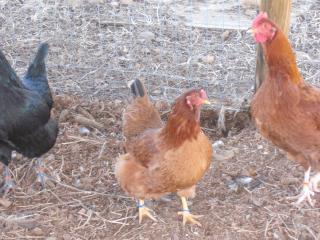- Aug 13, 2010
- 106
- 3
- 89
We hatched chicks for the first time from our flock of Easter Eggers. Our Roo is and Easter Egger, and all the hens except one, are Easter Eggers. We have one Gold Star that lays big brown eggs. I wondered if anyone knew how the Easter Egger genes worked. Are they dominant? Will the cross between the EE Roo and GS hen make a green egg layer? We aren't sure which chick is hers, but we remember that the first one to hatch was out of a brown egg, and it was a chipmunk striped chick. We have one chipmunk chick with yellow legs, so we're guessing it's hers. But, we also have a plain white chick with yellow legs. We have a plain white EE hen, so we were thinking that belonged to her, but we'll never know because one of our EE hens has yellow legs too. Are there any hard and fast rules with this?
And while I'm at it, does anyone know where the pink eggs come in? We have one pink egg layer, but have no idea who lays it. We couldn't stay home and watch all the chicks hatch, so we're playing who's your mama.
And while I'm at it, does anyone know where the pink eggs come in? We have one pink egg layer, but have no idea who lays it. We couldn't stay home and watch all the chicks hatch, so we're playing who's your mama.






